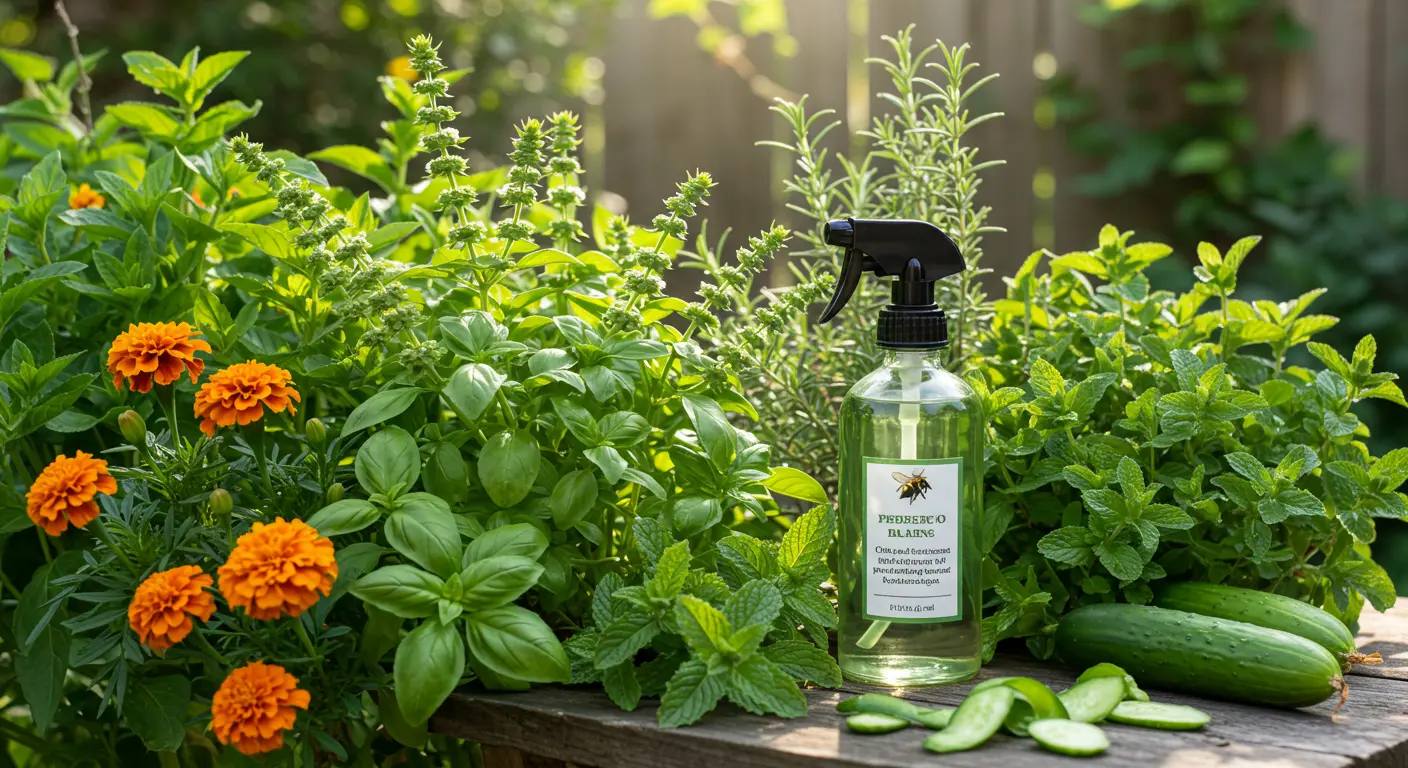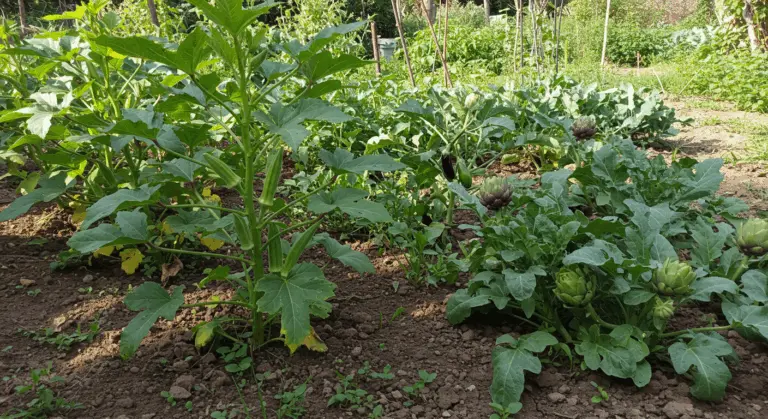Understanding Natural Bee Repellents
Natural bee repellents present an eco-conscious alternative to harsh chemical pesticides. They use specific scents that bees instinctively avoid, creating gentle yet effective barriers that discourage these pollinators from venturing into designated areas.
Two primary categories define natural bee repellents: plant-based solutions and homemade preparations. Plant-based options encompass carefully selected flowers, herbs, and shrubs that naturally release fragrances bees find disagreeable. Homemade preparations typically involve essential oils, spices, and household ingredients that can be combined to create sprays, sachets, or barriers that deter bees from particular spaces.
Essential Oils – Natural Bee Deterrents
Essential oils rank among nature’s most potent bee deterrents. Their main advantage? They discourage bees without inflicting harm—a crucial distinction that protects these indispensable pollinators while addressing your space management needs.
Several essential oils are particularly effective due to their strong scents. The most potent options include:
-
Peppermint
-
Citronella
-
Eucalyptus
-
Tea Tree
-
Clove & Cinnamon
-
Lavender
-
Citrus (Lemon, Lime, Orange)
-
Cedar wood & Rosemary
Making your own essential oil bee repellent is straightforward. Start with the basics: two drops of your selected essential oil mixed with one ounce of water in a spray bottle.
Lavender deserves special mention, functioning brilliantly as both a living plant and concentrated essential oil repellent. Dried lavender sachets placed near entry points to your home create a natural barrier against bees. Alternatively, a lavender oil spray (made by mixing lavender essential oil with water) can be applied to areas where bees frequently appear. Ironically, the delightful fragrance we humans cherish works as an effective deterrent to bees.
Keep in mind that natural repellents—essential oils included—gradually evaporate and demand reapplication every few days to maintain their protective barrier, especially in hot weather or after rain. Always dilute concentrated oils before use.
DIY Bee Repellent Recipes
Making homemade bee repellent is both economical and environmentally friendly, while granting you complete control over every ingredient. Here are several time-tested recipes utilizing everyday household staples.
Begin with a fundamental spray: blend 10–15 drops of peppermint, eucalyptus, or citronella essential oil with 2 cups of water in a spray bottle. Shake well before each use and apply to areas where bees frequently visit. This scented mixture creates a barrier that bees naturally avoid. For enhanced effectiveness, add a few drops of dish soap to help the solution adhere to surfaces longer.
Tea tree oil offers another effective option for bee deterrence. Combine 15-20 drops with 2 cups of water, then apply around your home’s perimeter—focusing on entryways, windows, and outdoor entertainment zones.
No essential oils? Spice-based repellents offer an excellent fallback solution. Garlic proves remarkably effective: crush 4–5 cloves, steep them overnight in distilled water within a spray bottle, then use your homemade deterrent. For garden protection, sprinkle garlic powder around the base of plants (but never directly on bees). Cinnamon and lemongrass can be used similarly, either as powders or by steeping them in water to create a spray solution.
Want maximum impact? Consider crafting a vinegar-based repellent by mixing equal parts white vinegar and water with 10 drops of your preferred essential oil. This strong combination creates an aroma that bees find genuinely repulsive. Apply this mixture to outdoor furniture, deck railings, and other areas where bees tend to land or hover.
Plants That Repel Bees
While bees remain invaluable for pollination, certain situations call for maintaining distance from specific property areas. Strategic plant placement can establish natural bee-free zones without resorting to harmful chemicals—an approach that respects both your comfort and environmental responsibility.
Aromatic herbs excel at creating bee-deterrent gardens, their intense fragrances forming natural barriers. Consider planting these in containers near seating areas or entryways:
-
Mint (Peppermint, Spearmint): The strong menthol scent is a primary deterrent.
-
Basil & Thyme: Their complex aromatic profiles confuse and repel bees.
-
Rosemary, Sage, Rue, Bay Leaf, Chives, and Wormwood: These also produce scents that discourage bee activity.
Numerous flowering species simultaneously repel bees while enhancing your landscape’s aesthetic appeal. Geraniums and marigolds work especially well—marigolds even tackle additional garden pests as a bonus. Begonias and some red rose varieties are less attractive to bees.
Species boasting robust citrus or medicinal fragrances work very effectively. Citronella grass releases a lemony scent that masks floral aromas, while eucalyptus releases such an intense medicinal aroma that it overwhelms bee sensory systems. Lemongrass is another excellent choice.
You can also incorporate plants that are less visually attractive to bees, such as those with dull green or brown flowers. Certain species of carnation, zinnia, hydrangea, trumpet flower, and wintergreen are less likely to draw bees to your space.
Get the best protection by layering plants strategically—combine multiple bee-repelling species for comprehensive coverage. Plant taller species like eucalyptus toward the back of garden beds, medium-height plants like geraniums and marigolds in the middle, and low-growing herbs such as thyme and mint at the edges. This arrangement strengthens the repellent effect while cultivating an attractive, functional garden that maintains bees at a respectful distance.
Specific plants manufacture natural compounds and release distinctive aromas that bees find genuinely off-putting, transforming them into exceptional natural deterrents for outdoor spaces.
Eucalyptus stands out for its strong bee-repelling abilities. Its unmistakable medicinal bouquet contains compounds so intense that bees find them overwhelming—causing these pollinators to find alternative flight paths. You can either grow eucalyptus plants directly in your garden or harvest the leaves to create DIY repellent solutions for targeted application around your property.
Citronella—famous for its mosquito-repelling prowess—works equally well against bees. This tropical grass releases a lemony scent that masks the floral aromas bees typically seek out. Container cultivation transforms citronella into portable bee barriers, ready for strategic positioning during outdoor gatherings.
Numerous pungent culinary species also work as excellent bee deterrents. Need’s bitter compounds establish an atmosphere bees instinctively shun. Cloves emit a potent aroma that interferes with bees’ sensory perception, while garlic’s sulfur compounds act as a natural repellent that keeps bees at a distance without harming them.
Culinary powerhouses like basil and thyme serve dual purposes—enhancing your bee-deterrent garden while enriching your kitchen repertoire. Basil’s complex aromatic profile contains compounds that confuse and repel bees, while thyme’s intense herbal scent creates an effective boundary. Their versatility allows seamless integration into established gardens or dedicated container cultivation for targeted bee-free zones.
For best results, use variety—cultivate a varied collection of these aromatic deterrents. Multiple aromatic species working in concert generate a sensory landscape that bees find both overwhelming and disorienting, encouraging them to seek more hospitable areas. This multi-plant approach gives thorough protection while maintaining an attractive and functional landscape that serves multiple purposes in your outdoor living spaces.
Other Natural Deterrents for Bees
Plants and oils aren’t your only options—several additional household items effectively deter bees:
-
Vinegar: Equal parts white vinegar and water create a potent spray. The sharp acidic aroma naturally repels bees, though reapplication after rainfall is essential.
-
Cucumber Peels: Fresh cucumber skins contain acidic properties that bees find disagreeable—scatter them strategically around outdoor entertainment areas.
-
Fabric Softener Sheets: These household staples contain compounds that naturally repel bees. Tuck them discreetly into outdoor cushions or position them near seating arrangements.
-
Cinnamon: Sprinkle ground cinnamon or use a cinnamon-water spray around potential nesting sites to confuse and repel bees.
-
Color Choices: Bees perceive dark colors (black, brown) as threats and have difficulty seeing red. Consider this for outdoor decor and clothing.
-
Moving Water: Small fountains or features with turbulent water signal danger to bees, naturally discouraging them from the area.
Avoiding Bee Attraction
Prevention works better than repulsion—the most effective strategy involves avoiding bee attraction entirely:
-
Skip Floral Fragrances: Since bees gravitate toward flower scents, eliminate perfumes, scented lotions, and floral hair products during outdoor activities.
-
Strategic Color Choices: Bees find blue, violet, and purple irresistible. Choose neutral tones or red instead—colors that challenge their visual perception.
-
Cover Food and Drinks: Sweet foods and beverages are powerful bee magnets. Use lids and covers, and promptly clean up spills.
-
Create a Diversion: To manage persistent bee traffic, set up a small feeding station with sugar water at the far end of your property to redirect them away from high-use areas.
Safety and Environmental Considerations
Using bee repellents requires careful balance between effectiveness and environmental stewardship. Natural alternatives strike this balance well—they deter bees without contributing to colony collapse disorder or jeopardizing vulnerable pollinator populations that underpin global food security.
Additionally, natural repellents present minimal health risks to humans and pets when properly applied—a stark contrast to chemical insecticides that deposit harmful residues on treated surfaces.
Regardless of your chosen repellent strategy, careful following of application guidelines is essential. Even natural products can cause adverse reactions in sensitive individuals or when used incorrectly. Persistent bee issues—especially those involving established colonies—warrant professional intervention. Consult local beekeepers or wildlife specialists for humane relocation rather than attempting DIY solutions with large infestations. Many communities have resources for humane bee removal that preserve these important pollinators while resolving your bee concerns.
Timing is important when deploying repellents. Early morning or evening applications are ideal since bees are less active during these periods, reducing the likelihood of direct contact and potential agitation. This simple precaution both improves safety and maximizes deterrent effectiveness.
FAQs About Natural Bee Repellents
Considering natural bee repellents but have lingering questions? Here are comprehensive answers to the most frequently asked questions about eco-friendly alternatives to chemical pesticides.
Are natural bee repellents actually effective?
Absolutely—though effectiveness varies based on bee species and environmental factors. Essential oils like peppermint, eucalyptus, and citronella create scents that bees find unpleasant, encouraging them to avoid treated areas. Best results require consistent application and prompt reapplication following rainfall or scent dissipation.
Will natural repellents harm the bees?
Absolutely not. Natural repellents operate through scent-based deterrence rather than harm—a crucial distinction. This approach protects both your space and the essential bee population.
How often should I apply natural bee repellents?
Keep them working by reapplying every 3-7 days—more frequently following rain or during high humidity periods.
Can I use essential oils directly on my skin to repel bees?
Undiluted essential oils should never contact skin directly. Instead, create a safe repellent by mixing 5–10 drops of essential oil with 2 tablespoons of a carrier oil (like coconut or jojoba). Always conduct a patch test on a small skin area to identify potential sensitivities before broader application. Commercial natural repellents formulated for personal use are also available.
Are natural repellents safe around children and pets?
Though natural repellents are generally safer than chemical alternatives, certain essential oils pose toxicity risks to pets—cats being especially vulnerable. Keep concentrated essential oils out of reach of children and pets, and ensure any spray applications are dry before allowing access to treated areas. Thoroughly research individual ingredients for potential safety concerns affecting your specific household members.
What should I do if I discover a bee hive near my home?
Discovering an established hive? Don’t try DIY removal or repellent application—this can disturb the colony. Instead, contact a local beekeeper or a professional service specializing in live relocation. Many professionals offer removal services at no cost or minimal fees—particularly for honeybees, which hold significant value for beekeeping operations.




